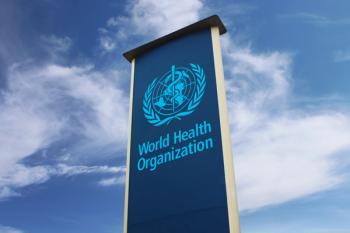
EHR Data Show MM Treatment Burden Higher Than Chronic Lymphoid Leukemia
This new study shows how using electronic health record (EHR) data can objectively quantify patient treatment burden among individuals who have multiple myeloma (MM) compared with patient-reported outcomes, which can be subject to recall bias.
Patients with
The study also shows how electronic health records (EHRs) can be used as a meaningful method of quantifying treatment burden.
MM is currently incurable, but new treatments have extended life expectancy for patients. These two realities have resulted in a situation where patients with MM tend to rotate between periods of intensive therapy followed by periods of maintenance therapy while awaiting signs of disease progression, said the authors.
Treatment for MM results in considerable health care utilization and costs for patients and payers, yet the investigators said the concept of “treatment burden” extends beyond health care utilization to include the effects the treatments have on patients’ functioning and well-being.
Treatment burden is often measured by surveys, which result in patient-reported outcomes (PROs). Such data can be useful, the study authors said, but those data also come with limitations.
“Although using questionnaires to capture PROs is increasingly important to measure health outcomes in addition to clinical outcomes, PROs also cause an additional administrative burden on patients and may be subject to recall bias,” they wrote.
Conversely, EHR data are objective and do not place an additional burden on patients, the authors noted. EHRs can therefore be an important tool in quantifying treatment burden.
In the new study, the investigators wanted to show how EHRs could be used to calculate treatment burden among people with MM. They also wanted to add context by comparing EHR-based treatment burden in MM to that of a similar hematological disease, CLL.
The authors retrospectively looked at reimbursement data for 176 people with MM and then compared those data with EHRs from 173 people with CLL. They defined treatment burden as the number of hospital visits a patient experienced on different days. They also analyzed contextual factors such as the type of visit (doctor’s appointment vs emergency department visit, for instance), patient age, and time since diagnosis.
They found that treatment burden was highest for people with MM in the first year following diagnosis, but small differences in disease burden when patients were analyzed by age groups—although they said older patients had a somewhat higher burden associated with comorbid conditions.
Compared with CLL, the authors found that MM had a higher treatment burden. For instance, in the first year following diagnosis, people with MM who were over the age of 65 had an average of 63.8 health care visits compared with 25.6 visits for people with CLL. That finding matches what earlier research suggests although the authors noted that new treatments for CLL have included more intensive treatment regimens. They said it may be that the treatment burden of CLL will increase in the future.
The authors said their report is an important step in the goal of having a better understanding of the treatment burden of MM. They said such efforts can help improve patient care.
“With improving survival, measuring burden of treatment in clinical practice to reduce treatment burden in patients with MM and addressing it individually contribute to more patient-centered care,” they concluded.
Reference
Bennink C, van der Klift M, Sonneveld P, et al. Measuring hospital-related burden of treatment in multiple myeloma using electronic health records’-reimbursement data. Health Policy Technol. Published online November 11, 2022:100695. doi:10.1016/j.hlpt.2022.100695
Newsletter
Stay ahead of policy, cost, and value—subscribe to AJMC for expert insights at the intersection of clinical care and health economics.













































